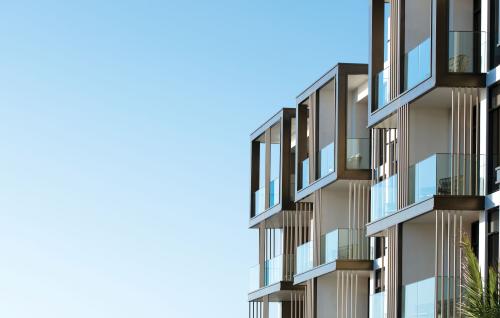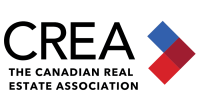
Increasing Interest
By Sarah Hoban | Summer 2022
Investment in multifamily assets reached new highs in 2021. Colliers’ 2022 National Multifamily Report notes that multifamily sales volume reached $335.3 billion — more than office and industrial sales combined. With increased demand and higher rents, the sector continues to look strong midway through this year. But like all other industries, it’s also facing challenges as well, including inflation, higher interest rates, higher construction costs, and supply chain issues.
“We’re seeing higher interest rates, and that, of course, increases the cost of capital for apartment investors,” says Christopher Bruen, senior director of research for the National Multifamily Housing Council. “Up until the first quarter of the year, that’s been more than offset by higher rent growth, with cap rates remaining at record lows. But while rent growth has more than compensated for inflation over the last two years, the question remains whether that can continue going forward if we come up against affordability constraints.”

Perhaps the biggest challenge has been an increase in demand. Apartment List’s May National Rent Report noted a national vacancy index of 4.6 percent — up from a low of 3.8 percent in August 2021 but still considerably lower than the 7.1 percent figure in April 2020, at the start of the pandemic.
And while 1Q2022 multifamily construction starts increased by 501,000 units — an increase of 37.3 percent over February 2021 — the number of completed units declined 16.9 percent to 266,000 units, according to the National Apartment Association’s Spring 2022 Apartment Market Pulse. NAA also pointed out that apartment construction could be sluggish for the rest of 2022 because of labor market challenges and rising energy prices.
Construction costs continue to play a major role. The National Multifamily Housing Council conducts a quarterly survey of construction and development activity and, says Bruen, respondents have reported a 45 percent increase in lumber costs over the first part of 2022. “That’s the most extreme,” Bruen says, “but other materials have been affected, too — electronic components, finishes, and roofing. This is making construction more difficult — all at a time where we have a housing shortage and vacancies at all-time lows.”
“The intensity of the supply chain issues that we saw in the midst of the pandemic are, hopefully, beginning to even out,” says Candice Chevaillier, CCIM, principal at Lee & Associates in Seattle, “but I think we have a ways to go.” Items produced overseas, for example, “are still going to be at mercy of additional waves of COVID-19 — many governments are serious about [quarantine] restrictions.”
Rent Growth Ahead
Increased costs and demand have made their mark on rents. Apartment List reported a national year-over-year rent growth of 16.3 percent from April 2021. For comparison, the site reported a 3.3 percent increase in 2018, a 2.3 percent increase in 2019, and a 1.6 percent decline in 2020. Yardi Matrix figures put overall March rents at $1,642, $212 higher than March 2021.
Rents have increased fastest in Sunbelt areas. A study by three universities looked at the most overvalued U.S. rental markets, with the top five all in Florida. The research — produced by Florida Atlantic University Real Estate Initiative and Florida Gulf Coast University’s Lucas Institute for Real Estate Development and Finance — examined historical data that show where rents should be and compared that with current marketplace rents. Miami-Fort Lauderdale is the most overvalued, with an average rental price of $2,832, 21.75 percent higher than the area’s long-term leasing trends.
Chevaillier points to another factor for dramatic rent increases. During the pandemic, she says, “a lot of buildings in our region were under eviction moratoriums, and rent increases were banned. For two years, costs continued to increase, but there was no way to increase income as well. Now that we’ve come out of that, rents are moving quite quickly.”
Rental demand has also been squeezed by the single-family housing market, which faces supply shortages of its own. A market report from real estate brokerage firm HouseCanary noted that the net new listings for U.S. single-family homes dropped 12 percent from April 2021 to April 2022.
Higher interest rates and inflation also deter renters looking to make the move toward home ownership. As of May, mortgage rates rose to 5.1 percent, up 2 full percentage points from January’s 3.1 percent. “What we’re seeing is that the higher interest rates may bring home values down in the short-term because people can’t pay as much,” says Chevaillier. “But realistically, it makes the debt service on those homes more expensive, which puts them out of reach and locks renters into renting, not buying.” And, she adds, inflation in general makes saving difficult for renters because the increased cost of living can whittle away savings for a down payment.
Among those hardest hit by home ownership affordability are millennial buyers. Recent statistics from Apartment List show that in 2021, nearly two-thirds of those surveyed reported that they had no savings, and only 16 percent had saved more the $10,000. (“The average savings of just over $12,000 represents a 4 percent down payment on a median-priced condo today,” Apartment List noted.) Post-pandemic, 24.7 percent of millennials surveyed said that they never expected to buy a home and would rent permanently.
Markets to Watch
So given the challenges, what opportunities are available to multifamily CRE professionals? A closer look at burgeoning markets, for starters. While growth remains strong in Sunbelt areas, Marcus & Millichap’s April multifamily research brief countered that gateway markets such as New York, Boston, Chicago, and Los Angeles were picking up strength as well. “After encountering a disproportionate number of hurdles in 2020 and early 2021, apartment demand has soared in the nation’s gateway metros,” the report notes, and these markets were in strong competition with Sunbelt metros such as Dallas-Fort Worth, Houston, and Phoenix for the country’s largest increases in occupied units.
The report cited several reasons, including an increase in job creation as well as new household formation in these areas. The leaders in the report’s survey of post-pandemic rent increases remained Sunbelt stalwarts Tampa-St. Petersburg, Phoenix, Atlanta, Dallas-Fort Worth, and Orange County, Calif. However, the report noted that there was still room for rent growth in gateway markets, as their rents hadn’t increased as significantly as other markets with large population influxes. “Furthermore,” the report adds, “none of the gateway metros have vacancy issues or outsized construction activity that could derail returning momentum for rent growth results.”
And in fact, says NMHC’s Bruen, during the pandemic, “there was a shift in demand away from smaller units — one-bedrooms and studios — in the most expensive coastal markets and a shift toward affordable markets, especially in the Sunbelt. In 2021, we started to see those coastal markets recover, and at this point it’s beyond recovery — really, everywhere it’s strong.”
Demographics play a role in determining a market’s appeal as well. StorageCafe, an online storage space marketplace, surveyed more than 3 million renters’ applications in 257 markets to determine patterns of net renter migration (a city’s inbound minus outbound residents). The study found that the Dallas suburbs attracted the most out-of-state applicants. These cities, dubbed “feeder cities,” include Irving and Lewisville, and offer good space for affordable prices, employment opportunity, and proximity to Dallas attractions.
While other top markets included other Sunbelt locales, a few surprises included the Great Plains states. “Traditionally losing ground to more hyped states on the East and West coasts,” the study noted, “U.S. prairie states, such as North Dakota, South Dakota, and Nebraska, have been intent on amping up their appeal in recent times. The Dakotas both saw double the number of incoming renters than outgoers, with Maine the only other state registering the same high figure.” The study adds that Sioux Falls, S.D., in fact, offered the country’s highest ratio of inbound-versus-outbound residents at almost four to one.
Post-pandemic, many younger renters are striking out on their own and, according to Rent Cafe, activity among Gen Z renters has increased by 21 percent this year, the largest boost among any age group. These renters are targeting large urban areas that provide employment, diversity, and cultural and social activities, with top trending cities including San Francisco, New York, Philadelphia, Boston, and Arlington, Va. One up-and-coming hot spot: Jersey City, N.J., which features new construction and proximity to Manhattan with relatively affordable prices.
Quality of life is also an essential consideration for a market’s appeal. Chevaillier notes that in Seattle she’s observed the popularity of mixed-use neighborhood developments with multifamily buildings, along with retail, entertainment, outdoor space, and parks. “Those micromarkets can be very strong and in high demand. They’re very attractive to tenants.”
Higher interest rates and inflation also deter renters looking to make the move toward home ownership. As of May, mortgage rates rose to 5.1 percent, up 2 full percentage points from January’s 3.1 percent.
Location can also determine which multifamily sectors have the strongest rent growth. According to recent CBRE statistics, rents for Class C multifamily properties have outpaced Class A and B properties nationally, although the balance is tipped because of larger coastal markets such as L.A., Washington, D.C., and Boston, where, says CBRE, renters compete for a limited supply of value-add Class C units. In Sunbelt areas, on the other hand, Class A and B rents are growing more quickly.
Sustainability and Livability
Multifamily developers and owners are also increasingly needing to factor in costs for sustainability features in new construction. A recent Cushman & Wakefield study found that LEED-certified multifamily properties consistently command higher rents than comparable noncertified properties — about 3 percent higher as of 4Q2021. While the study showed that such properties often have lower occupancies, the rent premium more than compensated.
Sustainable features may involve higher upfront costs for developers, but they can save money in the long run, says Caitlin Sugrue Walter, NMHC’s vice president for research. “It varies by situation. Our recent resident-preferences survey that showed there are a lot of technology features that residents find value in and expect to have.” But, she adds, these features have also come up against supply chain delays. “[Computer] chips for example, are still a big problem. We’re hopeful it will get better, but if you have key fob entry, obviously that’s a problem both for new construction and operations. You either have to pay more or come up with some other solution.”
The benefits of sustainable technologies can become a challenge when they’re mandated through municipalities’ energy efficiency standards, says Chevallier. That can drive up construction costs and affect affordable housing. “Our developer clients prefer carrots over sticks,” she says. “Offer up these technologies, let us adopt them, and let the market dictate.”
One other post-pandemic fallout for multifamily: Work from home. During COVID-19 lockdowns, home-based workers sought out larger alternatives to studios and small one-bedroom apartments. Such units were affordable as they were farther from central business districts, but since renters didn’t need to commute, they were appealing. “That was definitely one of the drivers behind that shift toward larger units and more affordable markets,” says NMHC’s Bruen. “But as the market has recovered, it’s unclear where that’s going to have longer-term implications.”
One other post-pandemic fallout for multifamily: Work from home. During COVID-19 lockdowns, home-based workers sought out larger alternatives to studios and small one-bedroom apartments.
In Seattle, says Chevaillier, “before the pandemic we had committed to building a lot of smaller efficiency or studio units. During the pandemic, we saw that when tenants were faced with being locked down in their 300-sf efficiency units, the walls got pretty small. So, we saw demand for one-bedrooms plus den, or two- and three-bedrooms. Now we’re starting to see that swing the other way again. But the reality is that tenants are going to be working from home in some capacity more than they were before, so thoughts around space planning have to reflect that. Maybe there’s coworking space within buildings or some other type of third place.”
She adds that those in the multifamily space will need to put more importance on creating a sense of place for renters. “Where people want to live and work has a lot to do with where they have the ability to socialize and enjoy recreational amenities,” she says. “The more that apartment projects can be thoughtful of that full picture, we’ll be much more successful, as workers get back to work and want to be in locations that have those kinds of amenities. Those assets will be more successful than those who put their stake out in the middle of nowhere and expect people to drive there. That’s what’s really changed.”






